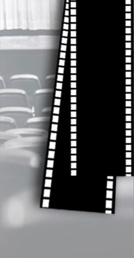Rating
-

Comedy / Drama
/ Horror (US); 1999; Rated R; 100 Minutes
Cast
Guy Pearce: Captain John Boyd
Robert Carlyle: Colqhoun
Jeremy Davies: Toffler
Jeffrey Jones: Hart
John Spencer: General Slauson
David Arquette: Cleaves
Produced by
Adam Fields, David Heyman and Tim van Rellim; Directed
by Antonia Bird; Screenwritten by Ted Griffin
Review Uploaded
4/30/99 |
Written
by DAVID KEYES The
word "ravenous" is defined by dictionaries as 'wanting to
eat or drink more than one can reasonably consume.' For
a movie named after it, there can be two distinct meanings
of the term: (1) the film is about people who eat or drink
too much of something; or (2) the movie contains things
in it that we may find delicious, but are too numerous to
devour. Since "Ravenous" is, of course, about a human who
eats other humans, the first definition always applies.
Meanwhile, the second meaning is only directed to those
who hate the idea, or think that cannibalism has its limits,
even at the cinema.
But
the truth is, I wasn't disappointed or overfed by what "Ravenous"
had to offer. Here is a film that is scary, funny, amusing,
suspenseful and awkward all at the same time, without ever
being overblown or overproduced. The movie takes place in
the year 1847. Upon a Spanish-American soldier's victory
in battle, he is mistaken for a corpse and piled underneath
hordes of bodies. He regains his strength from the blood
of the dead, and is proclaimed an accidental hero when he
is able to capture an enemy outpost afterwards. Alas, his
commanding officer considers him a coward, and sends him
off into the wilderness of Fort Spencer.
The
hero is Captain John Boyd, played by "L.A. Confidential"s
Guy Pearce. As he arrives in the dank wilderness of this
Fort Spencer, he is introduced to a group of soldiers who
look odd, but have delectable personalities. The captain
of the assemblage, Hart (Jeffrey Jones), is the core of
the establishment, a man whose sense of humor carries the
movie into a zany rotation of wit and wisdom.
Meanwhile,
the soldiers discover a man in the frigid snow named Colqhoun
(Robert Carlyle), who, after being recovered and nursed
back to health, tells the story of how he and a group of
travelers became lost deep in the mountains, and sought
shelter in a cave. There, hunger consumed them; Colqhoun
describes the experience well and specifically. "First,
we ate the oxen, and then a dog, our belts, and our shoes..."
Not surprisingly, his story concludes with an ominous claim
that the travelers became psychotic, and began eating each
other. Description upon description of the horrendous cannibalism
prompts Hart, the captain, to send his soldiers up into
the mountain to investigate.
What
the soldiers find up in that cave is reminiscent of what
Sam Neil found on a sinking ship in "Dead Calm." The theory
that Colqhoun is the victim turns out to be the pretension;
he is actually the man-eater, hiding behind his lies so
that he can easily trap these soldiers into a ghastly horrific
experience. The gruesome death scenes, the comparisons between
steak and corpses, and the bloody showdown are all evidence
that, yes, devouring human flesh has indeed consumed this
man beyond comprehension. It is inevitable that the director
display the cannibalism rather than to 'suggest' it, though,
because without the proof, we would have a hard time believing
it ourselves.
The
movie works best when it's beginning to establish a mood
and atmosphere, just before it turns to grotesque displays
of gratuitous death. Through the obligatory flashbacks of
Boyd's encounter with a pile of dead bodies, our stomachs
wrench with incredible nausea; most of the images are just
as horrifying as those of "8MM," a film that uses sex as
an antagonist just as much as this one uses carnivorism.
Viewing them, it is no wonder that the director, Antonia
Bird, is a vegetarian.
The
script breathes new life into conventional horror twists.
Naturally, we will discover that this lost soul is the actual
cannibal, and naturally, there will be a showdown between
him and Captain Boyd. But these events are hidden well behind
the dark atmosphere and setting, which allows us to set
aside any predictions so that we are able to enjoy the film
the way it should be enjoyed. Nowadays, most of the creative
horror movies are centered on teenagers; that factor allows
us to easily predict what is and what is not going to happen
in the picture.
Maybe
that's because we know what teenagers are capable of in
horror movies. If you revolve one of these films around
soldiers of the Spanish-American war, the last thing you'd
expect them to do is eat each other.
©
1999, David Keyes, Cinemaphile.org.
Please e-mail the author here
if the above review contains any spelling or grammar mistakes. |





